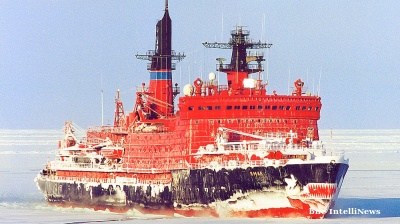The numbers simply don't add up. Hydrogen has been hailed as the saviour of the climate, but hard to make, difficult to transport and inefficient to use, the gas is not a panacea for the Climate Crisis.
Scientists estimate that 390mn tonnes of hydrogen will be required annually worldwide by 2050 to power the world, but today a total of only about 2.5mn tonnes is being produced worldwide and investors are shying away from the business. Under Europe’s REPowerEU plan, some 10mn tonnes per year of green hydrogen needs to be produced by 2030, and another 10mn tpy will have to be imported to meet demand. Currently Europe only produces a total of some 70,000 tpy, half of which is the less attractive blue hydrogen, and little investment is going into the sector.
The EU produced a mere 31,600 tonnes of green hydrogen (from electrolysing water using renewable energy) in 2023 and another 44,100 tonnes of blue hydrogen (made from methane that has CO2 as a by-product). Of the circa 2.5mn tonnes of hydrogen currently produced worldwide, the vast majority is blue hydrogen that means effective carbon capture and storage (CCS) is vital to make hydrogen viable as an energy source. A recent paper from Imperial College says that is going to be a big problem.

The current EU plan is wildly ambitious. The world’s two biggest hydrogen producers are the US and China, both of which are producing around 2mn tpy of hydrogen, but all of this, and also the future planned production, will be consumed domestically. The Middle East is in third place with 621,000 tpy and Africa and South America produce negligible amounts of hydrogen of either colour.
Globally, companies and governments are planning to build nearly 1,600 hydrogen production plants, including those for green hydrogen, but where the money will come from remains vague. Bloomberg reported that most of the hydrogen projects announced worldwide have yet to secure a single customer willing to purchase the product. Currently, only 12% of green hydrogen plants have customers with reliable contracts. The challenge of securing financing for projects without forecasted demand is next to impossible.
Transport and storage
Production and funding are only the first hurdles to overcome. Once hydrogen has been produced, how do you get it to the market? The most obvious means would be to utilise the existing well-developed natural gas pipelines. However, there is a problem with this; as hydrogen molecules are so small, they fit between the metal atoms that make the pipeline, quickly corroding it. To equip the entire pipeline network with special non-corrosive linings would be prohibitively expensive and take decades.
This summer the UK experimented with a disused natural gas pipeline and found that if hydrogen is mixed with methane, then there is no corrosion or leakage problems up to a 20% hydrogen/methane mix. So it seems likely at the start that hydrogen use will have to be mixed with methane; thus the demand for natural gas will continue for the foreseeable future. Hydrogen will not replace methane, only complement it.
A second suggestion has been to liquefy hydrogen in the same way as LNG, but there are problems with this too. Again, as the hydrogen atoms are so small, they have to be brought very close together to turn them into a liquid and, unlike methane, their protons are poorly shielded by their electrons. The upshot is that hydrogen has to be cooled to only 20C above absolute zero, or -253C, before it turns into a liquid. By comparison the relatively chunky methane gas only needs to be cooled to -82C before it liquifies. Hydrogen has the second lowest boiling point and melting points of all substances, only behind helium. The cost of cooling rises exponentially the closer you come to zero degrees Kelvin, making liquid hydrogen as means for transport impractical.
Not enough CCS
The bulk of the world’s hydrogen production is blue hydrogen, as it is easier to make and costs between a third and quarter of the cost of making green hydrogen. However, a major impediment holding back larger-scale production is what should be done with all the CO₂ that is produced as a blue hydrogen by-product.
CCS has long been seen as a silver bullet to combat global warning, but the feasibility of CCS, a central pillar in global climate change mitigation strategies, has come into question.
A recent study by Imperial College London published in the journal Nature Communications suggests that the Intergovernmental Panel on Climate Change (IPCC) has badly overestimated the amount of CO₂ that can be captured and stored underground long term, making current plans to keep temperature rises to 1.5C above the pre-industrial baseline unrealistic.
CCS was put forward at the COP28 summit as the answer to allow continued use of fossil fuels but still limit the emission of damaging GHGs, especially in “hard-to-abate” sectors, such as heavy industry, energy production and metallurgy.
“The IPCC’s Sixth Assessment Report projects subsurface carbon storage capacity to reach between 1 and 30 gigatonnes of CO₂ per year by 2050. However, the latest analysis highlights key oversights in these estimates, particularly regarding geological, geographical and economic constraints,” the study says.
The lead author Yuting Zhang concluded that while storing up to 16 gigatonnes of CO₂ underground annually by mid-century is technically possible, the monumental increases in investment, storage capacity and deployment rates are not happening, leaving a large gap between the realities and expectations.
“The amount of carbon dioxide that can be realistically stored underground each year is less than UN estimates show,” the study argues. “Existing projections are unlikely to be feasible,” warns the report.
In particular, the analysis said that the IPCC projections for Asia, including China, Indonesia and South Korea, where current development is low, assumed unrealistic rates of deployment, which means existing projections are unlikely and unreliable.
At the current pace of development, targets of 5 to 6 gigatonnes of CO₂ storage per year by 2050 is more realistic, but that is insufficient to keep emissions low enough to stay within the 1.5C temperature increase target.
The shortfall in CCS capacity is a serious problem. As bne IntelliNews reported, the climate models are wrong and global warming is accelerating faster than even in the IPCC worst-case scenario. There is a danger of runaway warming feedback loops appearing sending the world over environmental tipping points that could lead to rapid collapse of various environmental ecosystems, scientists warn.
The international efforts to tackle the problem have been blocked by vested interests in the energy lobby, and the reluctance of the leading developed world economies to hurt their economic interests, as detailed in a bne IntelliNews feature on the carbon budget; the US and EU in particular have already blown through the amount of allowable emissions that was part of the Paris Agreement plan to limit global warming.
Likewise, the 2022 COP27 summit in Sharm el-Sheikh, Egypt, highlighted the difficulties in securing meaningful commitments and the 2023 COP28 meeting, hosted by the United Arab Emirates (UAE), was a washout, although energy giants for the first time admitted that fossil fuel use needs to be limited. A key part of the COP28 resolutions called for the reliance on CCS technology to reduce CO2 emissions of hard-to-abate emissions – technology that does not yet exist.

Hydrogen is an inefficient fuel
Making hydrogen is an energy-intensive process and very inefficient. Ideally using 1 kWh of electricity to make blue hydrogen will yield 1 kWh of electricity when it’s converted back, but it doesn't work like that. In reality, you need to put in vastly more power than you get out again at the end.
How much electricity is needed to make green hydrogen? A completely efficient electrolysis system would require 39 kWh of electricity to electrolyse 9 kg of water into 1 kg of hydrogen (and 8 kg of oxygen), but in reality, the input is closer to 50 kWh.
Turning hydrogen back into electricity is equally inefficient. Using the same kilo of hydrogen, it has a fuel value of about 33 kWh per kg – i.e. close to the 39 kWh that for a 100% efficient conversion.
In practice, using hydrogen as a fuel only has at best a 50% efficiency as it is a difficult gas to work with, which means when you burn the kilo of hydrogen you only get about 15 kWh of power out, according to scientists.
Three and a half times more energy goes into make a kilo of green hydrogen than you get out from burning it.
For comparison, a thermal engine is about 42% efficient, a gas turbine about 60-70% and a fuel cell can be 85% efficient.
The chemical process of splitting the hydrogen off methane (CH4) is much easier and cheaper to do, but that has the big disadvantage of producing CO₂ as a by-product and if the Imperial Collage study is correct and there won’t be enough CCS, then very large-scale blue hydrogen production is a write-off, as it produces as much, if not more, CO₂ as burning fossil fuels.
One of hydrogen’s few advantages over other fuel types is its high energy density. Diesel has an energy density of 45.5 megajoules per kilogram, slightly lower than gasoline, which has an energy density of 45.8 MJ/kg. By contrast, hydrogen has an energy density of approximately 120 MJ/kg – almost three times more than diesel or gasoline. If a commercial solution for using hydrogen as a car fuel is developed it would triple or quadruple that cars’ range.
Green hydrogen production is only worthwhile if there is abundant “free energy” – a massive excess of solar or wind power that can be switched from supplying the grid at peak hours to hydrogen in lower demand periods like the middle of the day.
Currently green energy accounts for 41% of Europe’s energy mix in 2022, but that entire production is consumed by the daily demand. That is unlikely to change as although investment continues to flood into renewables the amount of excess capacity needed to displace the current gas completely and still have enough to then make enough hydrogen to supply the peak periods at night is massive. The EU is still a very long way from having that sort of excess renewable generation capacity.
bneGREEN

Kyrgyzstan says neighbours “upset” by country’s lack of water
“This year we were supposed to overcome shortages, but instead, they have intensified,” deputy head of cabinet tells Uzbekistan and Kazakhstan.

EXPLAINER: What is the EU’s CBAM and how will it affect global trade from 2026?
The European Union’s Carbon Border Adjustment Mechanism (CBAM) will enter its full operational phase on January 1, 2026, marking a major shift in global climate and trade policy.

Iran faces critical water crisis after driest year in five decades
Iran faces critical water crisis after driest year in five decades with 40% nationwide rainfall drop.

Global renewables to double by 2030, but IEA warns momentum must accelerate
Global renewable energy capacity is on course to double by 2030, reaching 4,600 GW—comparable to the current combined total of China, the European Union and Japan—according to the International Energy Agency’s Renewables 2025 report.




